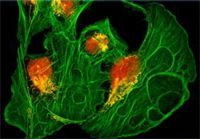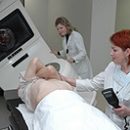How Osteosarcoma is treated? What is the surgical method of treatment of osteosarcoma? When chemotherapy is carried out osteosarcoma? What will happen after the end of treatment? Read in this article.
Content
Treatment of osteosarcoma
Over the past 30 years, significant successes have been achieved in the treatment of osteosarcoma. In the 60s, the only method of treatment was the amputation of the limb. Depending on the stage of the disease, the survival of patients over 2 years ranged from 5 to 20%. Since the introduction of effective chemotherapy, it has an opportunity to apply it before and after the operation, and in some cases it was possible to avoid the amputation of the limb.
Currently, the 5-year survival of patients with a localized osteosarcoma exceeds 70%. The survival of patients with sensitive chemotherapy tumors varies within 80-90%.
After examining the patient and clarification of the stage of osteosarcoma, a treatment plan is developed. It should be borne in mind that due to the rarity osteosarcomer, treatment should be carried out only in specialized branches that have sufficient experience.
Surgical method of treatment of osteosarcoma
 In patients with a localized, but unscase, after chemotherapy, the forecast of the disease is usually unfavorable. This category includes patients with osteosarcomes of the base of the skull, spine and bones of the pelvis.
In patients with a localized, but unscase, after chemotherapy, the forecast of the disease is usually unfavorable. This category includes patients with osteosarcomes of the base of the skull, spine and bones of the pelvis.
Surgical treatment can be concluded both in removing the tumor and preserving the limb and in amputation of the limb. The operation with the preservation of the limb can be performed in 50-80% of cases, although in some cases later have to resort to amputation.
For some patients, amputation is the only type of possible operation.
This refers to patients with extensive proliferation of the tumor into the surrounding fabrics, germination of vessels and nerves. After prosthetics, such patients have the opportunity to walk already in 3-6 months after amputation.
Surgical removal of metastases is used in patients with lesion of pulmonary fabric. It takes into account the number, size and location of metastases, as well as the effectiveness of chemotherapy.
Osteosarcoma chemotherapy
Chemotherapy refers to systemic treatment methods.
The antitumor drug introduced into the body enters the bloodstream and reaches tumor cells destroying them. In most cases, osteosarcoma patients receive chemotherapy before or after surgery.
At the same time, the following drugs are used: methotrexate in high doses in combination with leacover, which neutralizes the drug and prevents side effects, doxorubicin (adriamycin), cisplatin, carboplatin, etoposide, andphosphamide, cyclophosphamide.
Chemotherapy leads to the destruction of tumor cells.
However, normal cells are damaged. The severity of side effects depends on the type of preparation, dose and duration of use.
From time side effects, it should be noted nausea, vomiting, deterioration or loss of appetite, hair loss, the formation of an ulcer in the mouth, a disruption of the menstrual cycle, hemorrhagic cystitis, violation of the function of the kidneys, liver and heart. Damage to the bone marrow cells can be accompanied by the addition of infections and bleeding.
In rare cases, chemotherapy increases the likelihood of second tumors, such as leukemia, but it should be borne in mind that the value of chemotherapy during osteosarcoma exceeds the risk of second tumors.
Osteosarcoma radius therapy
For the treatment of patients with osteosarcoma use external irradiation using rays or high-energy particles.
However, this type of therapy plays a limited role in osteogenic sarcoma. It can be effective in patients after incomplete tumor removal. In addition, radiation therapy is used to combat pain and patients in the event of a recurrence (return) of the tumor after surgery.
After the end of the treatment of osteosarcoma
After the treatment is completed, the patient is under the supervision of doctors and passes a periodic examination: radiography and computer tomography of the chest, bone scanning, echocardiogram, electrocardiogram, audiogram.
During the first year, the doctor visits the doctor usually every 2 months. This allows timely to identify side effects and complications and conduct appropriate treatment, as well as in the early stages to diagnose the recurrence (refund) of the tumor.
Psychological aspects in the treatment of osteosarcoma
Most cases of osteosarcoma occur in adolescence - the most sensitive period of human life.
All this postpones a deep imprint on the life of the patient, including the opportunity to attend school, to engage in product, work and other activities. A particularly difficult period is the first year of treatment.
Helping family members, friends, medical personnel and psychologist can have a positive effect on a sacrament of osteosarcoma.
It may also be a conversation with patients who have already suffered treatment on the same disease.









